Chaetomium Mold Spores: How They Affect Human Health
We may encounter around 400,000 distinct mold species in our environment, but only a tiny percentage of these prove harmful to humans. These “toxigenic molds” are still vital to our ecosystem but shouldn’t be allowed to thrive in our living or working spaces.
Among those damaging molds, we find the infamous chaetomium.
What Is Chaetomium Mold?
Chaetomium is a mold species typically found on materials and structures that have suffered water damage to some capacity. These include window frames, baseboards, ceiling tiles, and drywall, among many others.
The mold decomposes the cellulose in these materials, producing a change in their appearance and a distinctive “musty” smell.
As of this writing, there are approximately 95 known species of chaetomium. Their spores are characterized by their hasty growth rate, albeit they’re not wont to spread in the air unless the mold buildup is disturbed.
These molds are identifiable by their cotton-like texture and experience shifts in color as they mature. They appear whitish at their earliest stages but progressively turn grey, brown, and black.
Why Are Chaetomium Mold Spores So Dangerous to Our Health?
Chaetomium spores are particularly aggressive in that they secrete copious amounts of mycotoxins, which are toxic byproducts that can easily enter our body through our nose, mouth, and skin (by absorption), affecting critical organs in the process.
These mycotoxins may likewise find their way into the food items we consume, being able to withstand moderately high cooking temperatures (up to 500º F)
The health hazards associated with chaetomium mycotoxins are not to be taken lightly! At best, they could prompt mild allergic reactions.
When left unchecked, these molds can lead to asthma, serious pulmonary illnesses, skin and nail conditions, and, in the worst cases, severe brain infection, lupus, and multiple sclerosis. Some chaetomium species can shed carcinogenic mycotoxins as well.
Needless to say, people with a compromised immune system are far more prone to developing these terrible ailments.
Removing and Preventing Chaetomium
Upon encountering any type of moldy formation, you should not skimp on eliminating it as soon as possible. Chaetomium requires your attention the most, as it’s deemed one of the most dangerous mold types.
That said, ridding your house or office of chaetomium is not as easy as using a broom or duster and rubbing away. It bears repeating that the spores disperse when the growth is shaken loose, and they can subsequently come into contact with our clothes, eyes, nasal cavities, skin, and lungs.
If you wish to remove small chaetomium concentrations, you might want to wear protective gear, such as gloves, goggles (or similar eye protection equipment), a HEPA-rated respirator, and a hooded coverall.
Regardless, any attempt at remediating a chaetomium problem will be for naught if the root of the problem is not dealt with first, whether it be a pipe leak, standing water, or a water-damaged furniture/rug.
If the situation gets out of hand, the best course of action is to call a mold remediation professional or company that can take care of these growths on a larger scale.
